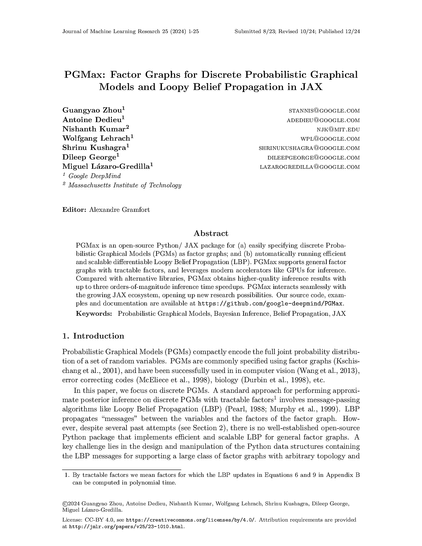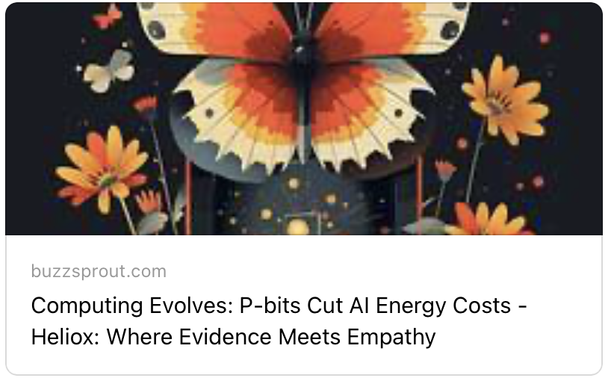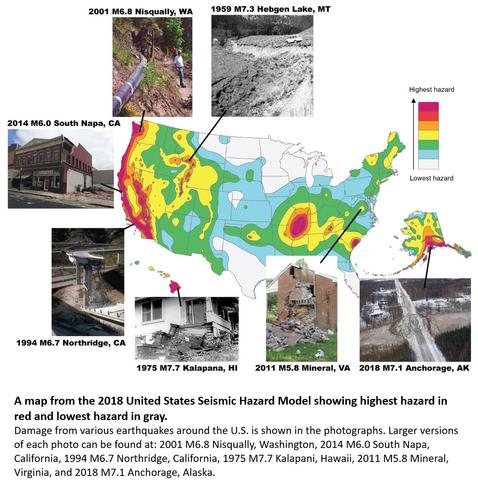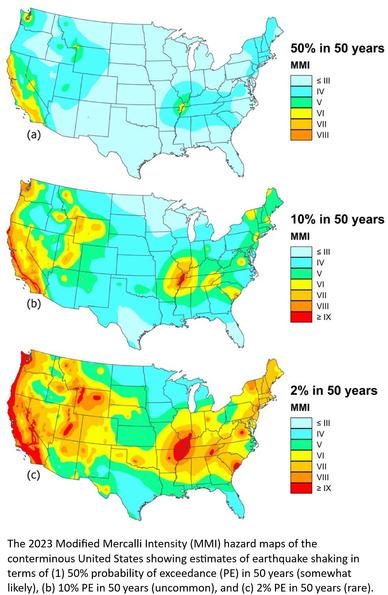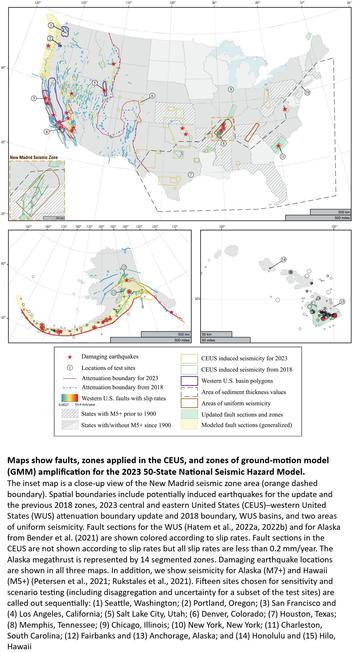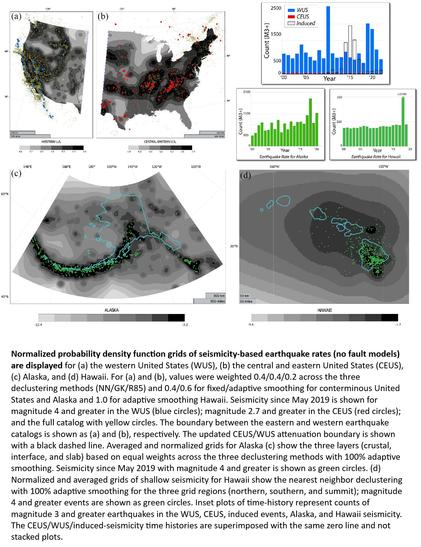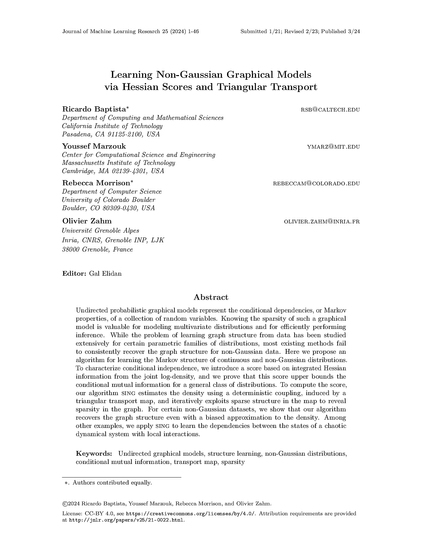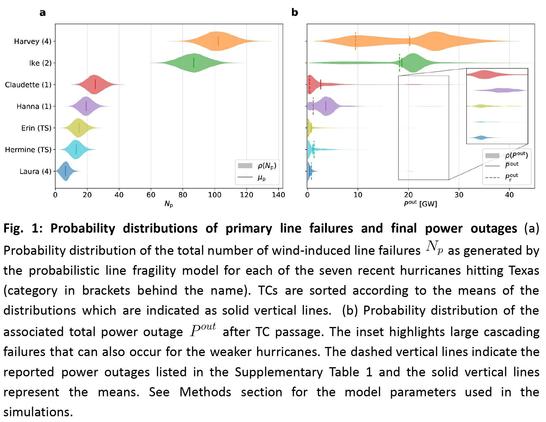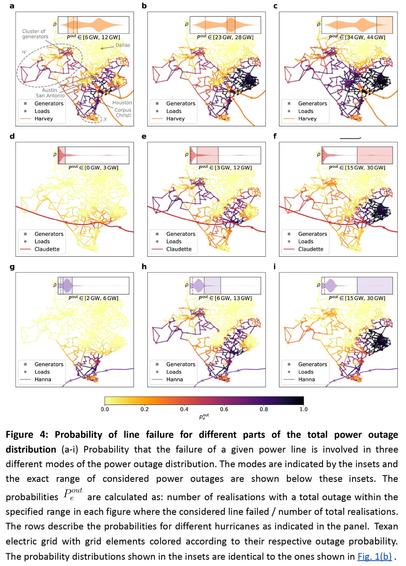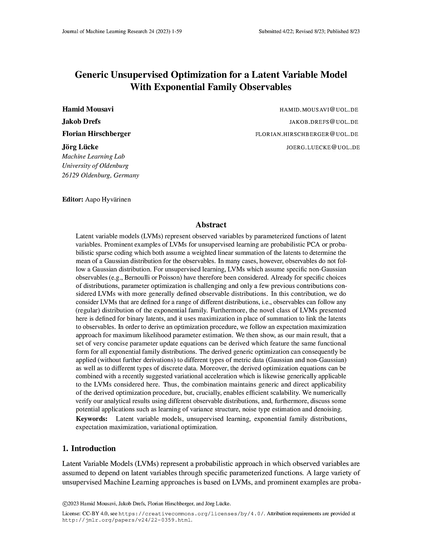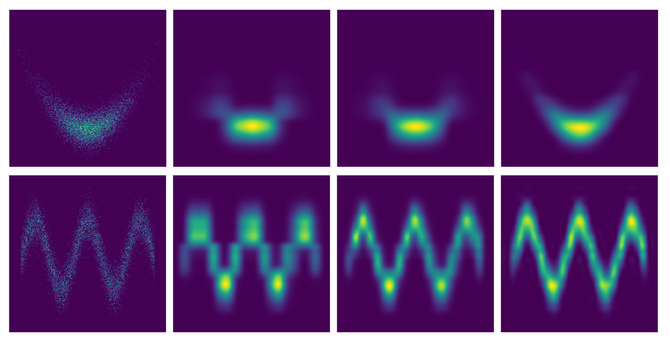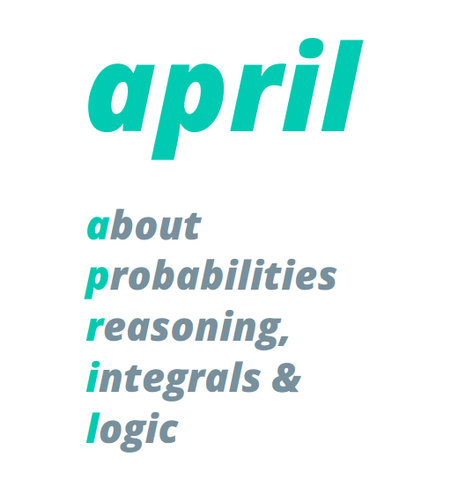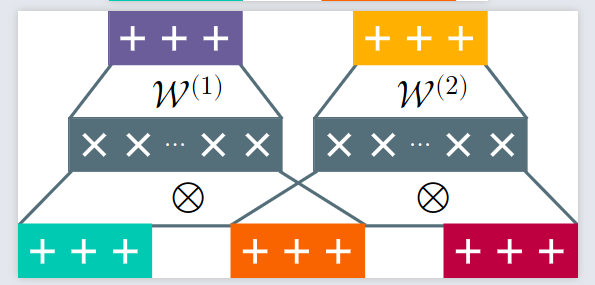Probabilistic Artificial Intelligence — https://arxiv.org/abs/2502.05244
#HackerNews #Probabilistic #Artificial #Intelligence #AI #Research #Machine #Learning #Data #Science
#Probabilistic
At the fundamental (#quantum) level, Nature is #probabilistic. Much of #computing is about modelling natural phenomena and it relies on semiconductor physics, which is inherently quantum mechanical. Yet, much of present day computing hobbles on #deterministic algorithms.🤷♂️
'PGMax: Factor Graphs for Discrete Probabilistic Graphical Models and Loopy Belief Propagation in JAX', by Guangyao Zhou et al.
http://jmlr.org/papers/v25/23-1010.html
#probabilistic #pgmax #pgms
Probabilistic weather forecasting with machine learning: “Weather forecasts are fundamentally uncertain, so predicting the range of probable weather scenarios is crucial for important decisions, from warning the public about hazardous weather to planning renewable energy use.
Traditionally, #WeatherForecasts have been based on numerical weather prediction (NWP), which relies on physics-based simulations of the atmosphere. Recent advances in #MachineLearning (#ML)-based weather prediction (MLWP) have produced ML-based models with less forecast error than single NWP simulations. However, these advances have focused primarily on single, deterministic forecasts that fail to represent uncertainty and estimate risk. Overall, MLWP has remained less accurate and reliable than state-of-the-art NWP ensemble forecasts.
Here we introduce GenCast, a #probabilistic weather model with greater skill and speed than the top operational medium-range weather forecast in the world, ENS, the ensemble forecast of the European Centre for Medium-Range Weather Forecasts.”
#science / #weather <https://nature.com/articles/s41586-024-08252-9>
Earthquake Hazard Uncertainties Improved Using Precariously Balanced Rocks
--
https://doi.org/10.1029/2020AV000182 <-- shared paper
--
#GIS #spatial #mapping #spatialanalysis #geomorphometry #probabilistic #seismichazard #analysis #PSHA #groundmotion #earthquake #risk #hazard #naturalhazard #quantitative #fault #faulting #geology #engineeringgeology #empirical #balancedrocks #PBR #California #cosmogenic #10Be #dating #model #modeling #hazardmodel #probability #infrastructure #cost #economics
Computing Evolves: P-bits Cut AI Energy Costs
Traditional computing is transforming into something more organic, efficient, and profound.
@Entropic_Labs @normalcomputing
#Probabilistic #Thermodynamic #AI #LLM
The 2023 US 50-State National Seismic Hazard Model - Overview And Implications
--
https://www.usgs.gov/programs/earthquake-hazards/science/2023-national-seismic-hazard-model-whats-shaking <-- USGS technical article
--
https://doi.org/10.1177/87552930231215428 <-- shared paper
--
#GIS #spatial #mapping #earthquake #seismichazard #risk #hazard #shakemap #cost #economics #geology #engineeringgeology #hazardmodel #model #modeling #seismicity #faultruptures #groundmotions #probabilistic #probability #geostatistics #engineering #planning #management #mitigation #NSHM #forecast #infrastructure #publicsafety #hazardassessment #fault #faulting #structuralgeology #intensity #mercalli #buildingcode #design #publicpolicy #shakemap #engineeringrisk #future
@USGS @FEMA
Right - so 2 basic ways to look at it:
Each specialty branch comes up with their own perspectives, priorities/hierarchies, and jargon. With few exceptions, they stay in their own lanes and do not mix outside their field/subfield. Their writings are stand-alone, rarely intended to connect back to the greater human knowledge base. They'll tell you exactly what "wet" or "sound" is, based entirely on their tiny-desk world-view.
The other way would be a general model of vibration, perhaps based on quantitative info rather than qualitative. It would incorporate all modes of vibratory phenomena, regardless of mediums, velocities, or other characteristics that were fleshed out by some subfield as critical for their particular context & definitions.
Frequency (Hz) actually would be a good quantitative baseline for this, if it hadn't been exorcised from #quantum mechanics.
The "old QM", as espoused by the founders and historic supporters for the split in Physics, used a semi-classical approach that was later abandoned. Later, Pi was added to E = hf as convenience for some aspects, but frequency generally falls away when you work with quantum states ala Schrödinger. #Time is just an input to QM, and is the #Newtonian, absolute kind. The concepts of frequency & wavelength seem to get in the way of the probabilistic formalism.
IMO, the #probabilistic formalism then gets in the way of a #relativistic completion to quantum theory being developed, though in reality, there is no limit to the imaginative supplemental mathematic epicycles that can be added while still spitting out the same expected answers.
Which brings us to political economy – of course.
Because this turn to defense contracting that the large tech companies have been making is a key part of their revenue model.
Work by Tech Inquiry recently revealed that
the five largest US military contracts to major tech firms between 2019 and 2022
have contract ceilings of $53 billion.
And those are the ones we know of.
Due to the combination of military classification and corporate secrecy
– transparency
– let alone accountability
– is very hard to come by.
The use of #probabilistic techniques to determine who is worthy of death
– wherever they’re used
– is, to me, the most chilling example of the serious dangers of the current centralized AI industry ecosystem,
and of the very material risks of believing the bombastic claims of intelligence and accuracy that are used to market these inaccurate systems.
And to justify carnage under the banner of computational sophistication.
As UN Secretary General Antonio Gutiérrez put it,
“machines that have the power and the discretion to take human lives are politically unacceptable,
are morally repugnant,
and should be banned by international law.”
It’s because of this that I join the
German Forum of Computer Scientists for Peace and Social Responsibility
in demanding that
“practices of targeted killing with supporting systems be outlawed as war crimes.”
Particularly given the very real possibility of a more authoritarian government in the US, where these companies are homed.
A place where the right wing in the country has already broadcast plans to
bring the two major tech regulators in the US
–the Federal Trade Commission and the Federal Communications Commission
–under direct presidential control in the future.
Where four of the top five social media platforms are housed, alongside cloud giants that currently control 70% of the global cloud market.
And where a federal abortion ban is on the right wing agenda,
accompanied by ongoing campaigns of book banning and censorship of LGBTQ resources and expression
already shaping legislation at the state level.
(6/8)
'Learning Non-Gaussian Graphical Models via Hessian Scores and Triangular Transport', by Ricardo Baptista, Youssef Marzouk, Rebecca Morrison, Olivier Zahm.
http://jmlr.org/papers/v25/21-0022.html
#hessian #probabilistic #multivariate
I’ll be at #NeurIPS the coming days. Ping me if you wanna hang out, grab a drink, or talk #probabilistic #machinelearing.
We propose to reinterpret KGE models into generative KGE circuits (GeKCs 🦎).
GeKCs model a probability distribution over triples in a knowledge graph.
Such interpretation is built on top of #probabilistic #circuits (PCs) which bring the perks mentioned above. See the 🧵 below!
Ant colony optimization algorithms
https://en.wikipedia.org/wiki/Ant_colony_optimization_algorithms
"[T]he ant colony optimization #algorithm (ACO) is a #probabilistic technique for solving computational problems which can be reduced to finding good paths through #graphs. Artificial ants stand for multi-agent methods inspired by the behavior of real ants. The pheromone-based communication of biological ants is often the predominant paradigm used."
Protecting The Texas Power Grid From Tropical Cyclones - Increasing Resilience By Protecting Critical Lines
--
https://arxiv.org/abs/2301.13793 <-- shared technical article
--
#GIS #spatial #mapping #ERCOT #Texas #infrastructure #powersupply #powergrid #powergrids #electricnetwork #extremeweather #climatechange #cyclone #tropicalcyclones #mitigation #risk #hazard #electricalsecurity #energysupply #energysecurity #poweroutages #poweroutage #USA #globalwarming #model #modeling #probability #probabilistic #wind #failure #transmissionlines #transmissionlines #hurricanes #supplyfailures #supplyshortages #outages
'Generic Unsupervised Optimization for a Latent Variable Model With Exponential Family Observables', by Hamid Mousavi, Jakob Drefs, Florian Hirschberger, Jörg Lücke.
http://jmlr.org/papers/v24/22-0359.html
#probabilistic #sparse #variational
I’m in #Vancouver for the next month. If someone wants meet for chats on #probabilistic #MachineLearning, #ProbabilisticCircuits, or #ProbabilisticProgramming feel free to DM me!
I will be hiring through #ELLIS this year: 3 fully-funded PhD positions for troublemakers in #ML #AI who want to design the next gen of #probabilistic #models and #programs that are provably #reliable and #efficient
I'm not sure how I've missed them until now, but the “#Probabilistic #Machine #Learning” book series by Kevin P. Murphy is outstanding. Such a comprehensive yet accessible distillation of concepts making it an excellent (teaching) reference. Just take a look at the contents page of Book 2: Advanced Topics! https://probml.github.io/pml-book/ and did I mention its accompanying #python #Github repo? https://github.com/probml/pyprobml #statistics
“A team of researchers from the Massachusetts Institute of Technology has achieved a milestone in #quantum technologies, demonstrating for the first time the control of quantum randomness.”
"Our discovery of controllable quantum randomness not only allows us to revisit decades-old concepts in quantum #optics but also opens up potential in #probabilistic computing and ultra-precise field sensing."
“Probabilistic computing [is] well-suited to simulate physical phenomena and tackle optimization problems where multiple solutions could exist and where exploration of various possibilities can lead to a better solution.”
https://phys.org/news/2023-07-quantum-fluctuations-potential-ultra-precise-field.html
Finally, I managed to write another blog post. In the post I am essentially talking about works (mostly) by Alessandro Rudi and coauthors on #tractable #probabilistic models such as #mixtures with #negative parameters.
Check out: https://trappmartin.github.io/website/post/2023_06_snf/
I will likely go into details of some of the aspects of this new family of models in follow up posts.
Let me know what you think about the blog post. Too high level or just right? Or any other feedback?
